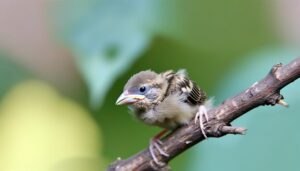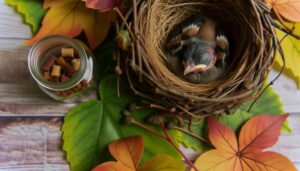Identify a Baby Sparrow – A Quick Guide
To identify a baby sparrow, look for downy feathers and a relatively large head. Notice its short, stubby tail and soft, fluffy plumage.
They have pinkish legs and a small, conical beak with a yellow gape at the base. Baby sparrows exhibit mottled brown and gray coloration and more downy feathers compared to adults.
Observe their behavior; they often make frequent, short flights, produce constant begging calls, and display erratic movements. Social interaction is high, with common begging postures and essential vocalizations like feeding and distress calls.
Keep observing for more insights into their distinctive traits and behaviors.
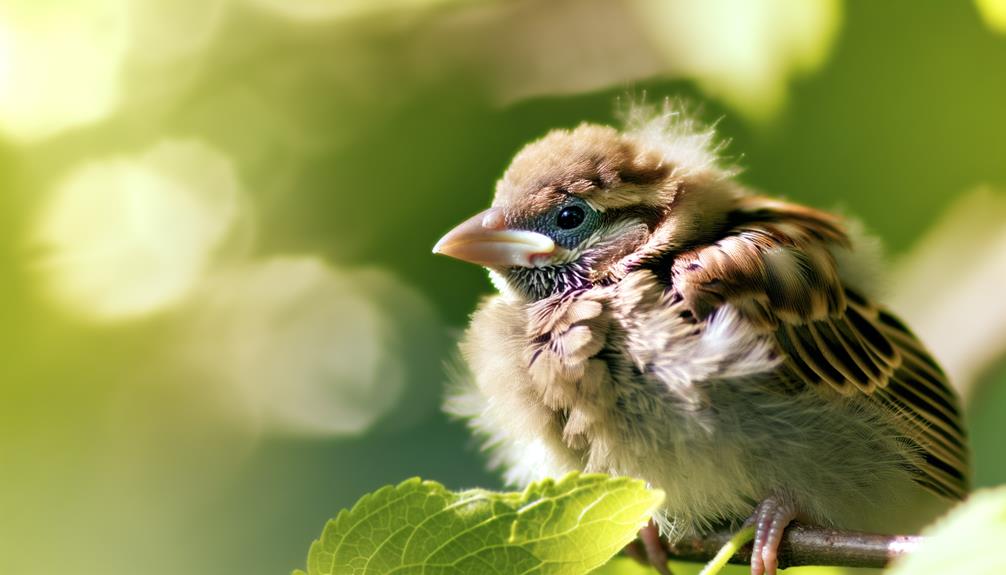
Key Takeaways
- Baby sparrows have downy feathers with soft, fluffy plumage for essential insulation.
- Their coloration is mottled brown and gray, with more downy feathers compared to adults.
- They have a conical-shaped, soft-textured beak with a distinctive yellow gape.
- They exhibit frequent, short flights and constant begging calls with high-pitched, repetitive chirps.
- Baby sparrows display social interactions and begging postures, often seen in erratic movements.
Physical Characteristics
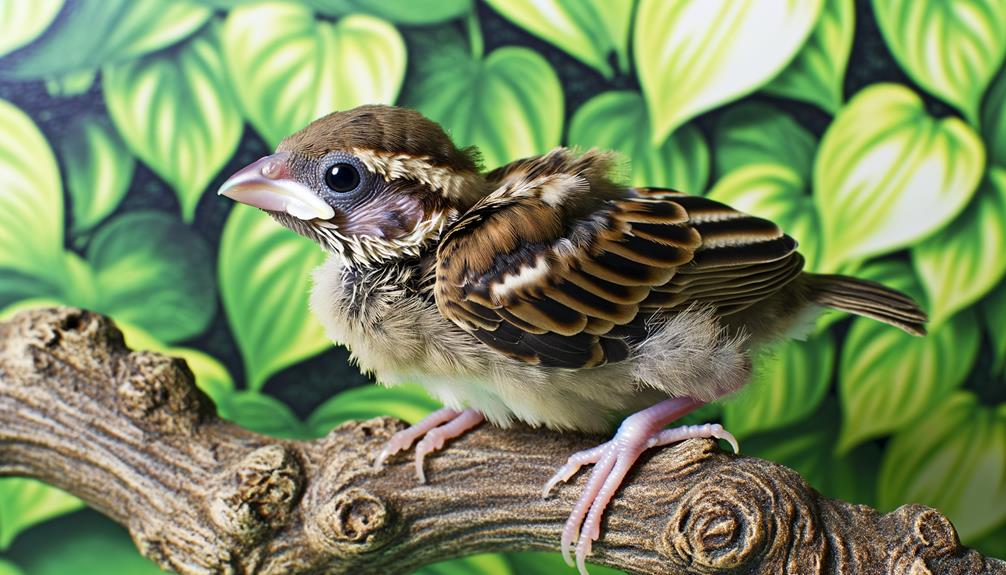
Baby sparrows have distinctive physical characteristics such as downy feathers, a relatively large head, and a short, stubby tail. You'll observe their soft, fluffy plumage, which helps them stay warm.
Their disproportionately large head houses keenly developing eyes and an ever-hungry beak. The short, stubby tail isn't just cute; it indicates they're still learning the art of balance and flight.
Pay attention to their pinkish legs, which contrast with the rest of their body. Their small, delicate claws are designed to grip tightly onto nest perches.
Plumage Patterns
Examining the plumage patterns of young sparrows reveals intricate details, from the subtle coloration shifts to the unique feather arrangements that assist in their camouflage and development.
You'll notice that baby sparrows often exhibit a mottled brown and gray color palette, which helps them blend into their natural surroundings, safeguarding them from predators. Their feathers are usually more downy compared to adults, providing essential insulation.
The wing and tail feathers show less definition, being shorter and less structured, indicating their stage of growth. Observing these nuances not only aids in identification but also enhances your understanding of their behavior and survival strategies.
Beak Shape
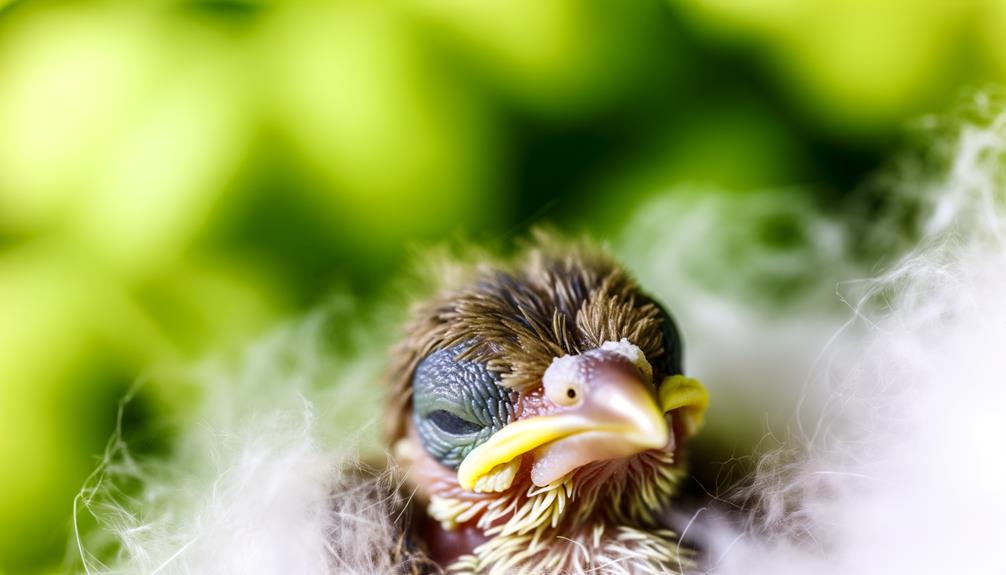
While observing their plumage patterns, you'll also notice that the beak shape of young sparrows plays a significant role in their feeding habits and overall development.
The beak is often soft and yellowish, adapting as they mature. It's crucial to recognize these characteristics:
- Conical Shape: The beak is short and conical, ideal for cracking seeds.
- Soft Texture: A soft texture indicates immaturity, as it hardens with age.
- Yellow Gape: The wide, yellow gape at the base of the beak makes it easier for parents to feed them.
- Small Size: It's proportionally smaller compared to adult sparrows, reflecting ongoing growth.
Behavior and Movements
Observing young sparrows, you'll find their behavior characterized by frequent, short flights and constant begging calls that signal their dependency on parental care. Their movements are often erratic, as they flutter their wings rapidly to gain stability.
You'll notice juvenile sparrows engaging in begging postures, such as crouching with open beaks and quivering wings. These actions are designed to attract attention from adult sparrows for feeding. Fledglings tend to remain close to nesting sites, gradually exploring their surroundings. They exhibit a high degree of social interaction, often following parents and siblings closely.
Vocalizations
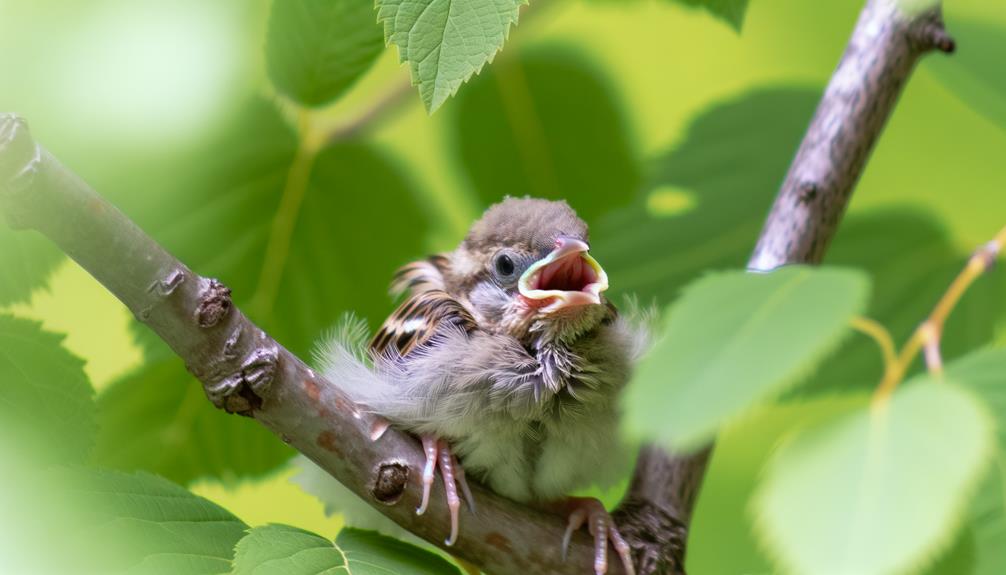
Young sparrows communicate through a series of high-pitched, repetitive chirps that vary in intensity and frequency based on their needs and environmental stimuli. These vocalizations are essential for their survival and well-being.
You can identify a baby sparrow's calls by listening for:
- Feeding Calls: Short, insistent chirps indicating hunger.
- Distress Signals: Rapid, louder chirps signaling danger or discomfort.
- Contact Calls: Soft, intermittent chirps to maintain parental connection.
- Begging Calls: Persistent, high-frequency chirps for food solicitation.
Conclusion
By honing your observation skills, you'll effortlessly spot a baby sparrow. Picture its soft, downy feathers with subtle streaks, a beak that's petite and conical, perfect for pecking.
Imagine it fluttering clumsily, still mastering flight, and listen for its high-pitched, insistent cheeps—a cry for food.
With these vivid details, you'll not only identify but also appreciate the delicate beauty of a fledgling sparrow, enhancing your bird-watching experience.




